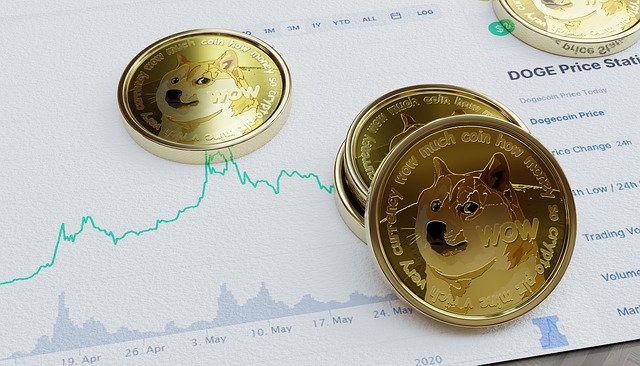XRP Crypto Price Predictions 2025 Outlook
Author: Jameson Richman Expert
Published On: 2025-11-02
Prepared by Jameson Richman and our team of experts with over a decade of experience in cryptocurrency and digital asset analysis. Learn more about us.
XRP crypto price predictions are a frequent topic among traders, investors, and blockchain enthusiasts. This comprehensive guide breaks down the key fundamentals, technical indicators, on‑chain metrics, regulatory drivers, and realistic bullish and bearish scenarios for XRP. You’ll find timeframe-based price projections (short-, mid-, and long-term), concrete trading and risk-management strategies, high-authority references, and practical resources to help you act on these predictions.

Executive summary
This article analyzes how legal clarity, banking adoption, central bank digital currencies (CBDCs), market cycles, and macroeconomic conditions could shape XRP’s price. We provide scenario-based forecasts, explain the indicators used to reach them, and offer actionable steps for traders — including where to trade and how to use tools and bots. For deeper trading strategy guidance, see our practical guide to crypto trading strategies and an automated Telegram bot development resource linked within.
Why XRP matters: fundamentals and use case
XRP (often called Ripple when referencing the company) is a digital asset created to enable fast, low‑cost cross-border payments and liquidity on demand. Unlike many proof‑of‑work or proof‑of‑stake networks, XRP Ledger (XRPL) is a consensus ledger optimized for throughput and low fees. Key fundamentals that matter for price:
- Use case: cross-border payments and interledger liquidity.
- Transaction speed and cost: sub‑second settlement and very low fees relative to many alternatives.
- Tokenomics: total supply initially at 100 billion XRP, with a portion held in escrow and periodic releases by Ripple.
- Partnerships and integrations: adoption by payment providers and banks can increase real-world demand.
For an authoritative overview, see the XRP entry on Wikipedia and Ripple’s official site:
Major drivers of XRP price
Understanding the forces that can push XRP higher or lower is crucial when making predictions.
1. Regulatory clarity and legal outcomes
Regulation is one of the single largest price drivers. The Ripple vs. SEC litigation and related regulatory discussions have historically caused significant volatility. Favorable legal outcomes and clear rules for token utility help institutional adoption; adverse rulings can reduce access to U.S. markets. Monitor official filings and credible news sources such as the U.S. Securities and Exchange Commission (SEC) for developments.
2. Banking adoption and partnerships
Real-world use by banks and payment processors increases transaction volume and demand for on‑demand liquidity (ODL) services that use XRP. Partnerships or pilots with major financial institutions typically generate positive sentiment.
3. Macro and crypto market cycle
XRP moves significantly with overall crypto market trends (Bitcoin and Ethereum market cycles). A broad market bullish cycle often lifts altcoins; conversely, macro tightening or risk-off sentiment can sharply reduce prices.
4. Supply dynamics
XRP’s supply schedule, escrow releases, and large holder behavior (whales) affect available liquidity. Large concentrated holdings can increase volatility if sold into markets.
5. On‑chain activity and demand metrics
Active addresses, transaction volume, and decentralized exchange flows show real demand. Platforms such as CoinMarketCap and CoinGecko provide real‑time metrics for reference.

Key on‑chain indicators to watch
- Active addresses and transaction count: rising activity can signal demand growth.
- Exchange balances: decreasing XRP balances on exchanges suggest accumulation; rising balances often signal selling pressure.
- Whale concentration: look for large transfers between wallets and exchanges using on‑chain explorers.
- Network volume and use for remittance: adoption for cross‑border payments is measurable through partner disclosures and on‑chain flows.
Specialized analytics providers such as Glassnode and IntoTheBlock offer in‑depth on‑chain metrics. Use these signals alongside technical analysis — they are complementary and improve prediction confidence.
Technical analysis: indicators and levels
Technical analysis (TA) helps set realistic price levels and identify market structure. Below are the commonly used indicators and how to apply them to XRP:
- Moving Averages (MA): 50‑day and 200‑day MAs indicate trend. A 50/200 MA cross (“golden/death cross”) often marks medium‑term trend changes.
- Relative Strength Index (RSI): measures momentum. RSI >70 is overbought, <30 is oversold — useful in mean‑reversion and breakout strategies.
- MACD: trend momentum indicator to confirm direction.
- Volume Profile & VWAP: identify price levels with high traded volume acting as support/resistance.
- Fibonacci retracements: identify targets and pullback levels after a price move.
Example approach: If XRP breaks convincingly above a long-term resistance zone with rising volume and a bullish MACD, a measured move using Fibonacci extensions can project short‑term targets. Conversely, a failed breakout with high exchange inflows increases the chance of a retracement to key support (e.g., previous structure or 200‑day MA).
XRP crypto price predictions: scenarios and numbers
Below are scenario-based predictions based on a synthesis of fundamentals, legal/regulatory backdrop, on‑chain metrics, and technical structure. These are illustrative forecasts (not investment advice); probabilities are subjective and change as new information arrives.
Short‑term (0–6 months)
- Bear case (25% probability): $0.20–$0.40. Catalyst: renewed market-wide risk‑off, negative regulatory headlines, or high exchange inflows. In this case, XRP could revisit earlier support zones as traders de‑risk.
- Base case (55% probability): $0.40–$0.80. Catalyst: steady adoption news, benign macro conditions, and consolidation with increasing on‑chain activity. Range trading between established support and resistance is likely.
- Bull case (20% probability): $0.80–$1.60. Catalyst: strong market rally led by BTC/ETH, positive legal/regulatory clarity, or major bank announcement using ODL with XRP. Momentum pushes price above prior resistance levels.
Mid‑term (6–24 months)
- Bear case (20% probability): $0.10–$0.40. Catalyst: regulatory setbacks, macro recession, or shrinking crypto risk appetite leading to lower altcoin valuations.
- Base case (60% probability): $0.50–$2.00. Catalyst: moderate institutional adoption, continued ODL usage growth, and periodic market rallies. XRP benefits from broader crypto recovery and real-world payments pilots converting into revenue streams.
- Bull case (20% probability): $2.00–$5.00+. Catalyst: major global banks adopt ODL or XRPL solutions at scale, and global regulatory frameworks favor tokenized payment rails. In a full altcoin cycle, XRP could reach multi‑dollar valuations.
Long‑term (2–5+ years)
- Bear case (15% probability): $0.05–$0.50. Catalyst: technology obsolescence, competition from CBDCs and private rails, or persistent regulatory restrictions that limit utility.
- Base case (65% probability): $1.50–$6.00. Catalyst: XRPL becomes a persistent liquidity option for cross‑border transfers, Ripple secures multiple global partnerships, and token utility supports sustained demand.
- Bull case (20% probability): $6.00–$20+. Catalyst: widespread global adoption for interbank settlement, large-scale integration into remittance corridors, and a major bull market for crypto assets amplifies speculative capital flows.
How realistic are $10+ targets? They’re possible in extreme bullish scenarios where XRP captures substantial market share of cross‑border flows and benefits from broad crypto market exuberance. However, such outcomes rely on multiple cascading favorable conditions and high conviction adoption metrics.

Putting probabilities into trading context
Probabilistic forecasts should inform position sizing, stop placement, and diversification. For example, if you assign only a 20% chance to the bull case, allocate capital accordingly and use risk‑controls so one negative outcome does not meaningfully impair your portfolio.
Practical trading strategies and tools
Below are practical strategies tailored to different trader types, plus resources to implement them:
Swing trading
- Identify a clear support/resistance zone using multi‑timeframe analysis (daily + 4‑hour).
- Use RSI divergence to spot reversals and confirm entries with volume spikes.
- Place stop‑loss below recent swing low and target partial profit at nearest resistance levels.
Trend following
- Trade in the direction of the 50/200 MA cross; use trailing stops tied to the 21‑EMA on daily charts.
- Scale in on pullbacks to the 50‑day MA during strong trending markets.
Scalping and short‑term momentum
- Use intraday volume profile and VWAP for entries and exits.
- Be disciplined with tight stop losses; fees and slippage can erode profits on frequent trades.
Automated trading and bots
Automation helps capture opportunities 24/7. If you're building or evaluating bots, check this Telegram bot development guide that covers common architectures and deployment tips. For strategy design and diversification across signals, see the practical guide to crypto trading strategies.
Where to trade XRP
Choose reputable centralized exchanges with good liquidity and compliance standards. Popular options include Binance, MEXC, Bitget and Bybit. If you plan to open accounts, use the following registration links:
Before trading, confirm KYC requirements and the availability of XRP trading pairs. For an in‑depth exchange review and comparison, see the analysis on whether Binance is the best exchange for traders and investors.
Is Binance the best exchange? — In‑depth analysis

Risk management and position sizing
Effective risk management is the difference between surviving and thriving in volatile markets.
- Position sizing: risk only a small percentage (e.g., 1–2%) of capital per trade based on stop‑loss distance.
- Set stop‑losses: technical stop levels rather than arbitrary dollar amounts.
- Diversify: hold multiple assets and strategies to reduce single‑asset tail risk.
- Use risk limits on exchanges: leverage magnifies both gains and losses; be cautious with margin.
- Tax and compliance: keep records and understand local tax obligations.
How macro trends and CBDCs affect XRP
Central bank digital currencies (CBDCs) and private rails are both competitive and complementary to XRP. If banks use CBDCs primarily for domestic settlement, XRP may be less needed domestically but can remain valuable for cross‑jurisdictional liquidity where interoperability is required. CBDC adoption timelines and interoperability standards (e.g., ISO 20022) will influence long‑term demand for interoperable rails like XRPL. For guidance on choosing trading platforms (including forex and multi-asset traders), see this broker and software guide:
Choosing the right broker and trading software
Historical perspective: what prior cycles tell us
Studying historical price action gives context for future projections. XRP peaked during the 2017 altcoin mania, retraced in 2018 bear markets, and then experienced renewed volatility during the 2020–2021 crypto cycle. Large rallies often follow extended bear markets when liquidity and sentiment align. Historical amplitude suggests XRP can move multiple‑fold during bull markets but also lose significant value when markets rotate out of risk assets.

Sentiment and news flow: how to monitor
Combine quantitative signals with qualitative monitoring:
- Follow major XRP and Ripple announcements via Ripple’s official blog and verified social channels.
- Use Google News alerts for “Ripple”, “XRP”, and “ODL”.
- Track legal filings and credible financial news outlets for regulatory developments (e.g., SEC announcements).
- Monitor social sentiment but weigh it carefully — social hype can be short‑lived and noisy.
Example trade plan (illustrative)
- Bias: Base case (XRP $0.50–$2.00 over 12 months).
- Entry: Accumulate on dips to identified support $0.45–$0.60 (example level; confirm on live charts).
- Stop‑loss: 12–18% below entry or below a technical support (whichever is tighter).
- Targets: Partial profit at $1.00, scale out at $1.80–$2.50.
- Position sizing: Risk 1% of portfolio per trade; adjust as confidence increases.
- Review: Reassess on major legal announcements or if exchange balances shift materially.
Tools and resources
- Price and market data: CoinMarketCap, CoinGecko
- On‑chain analytics: Glassnode, IntoTheBlock
- Legal and regulatory updates: SEC, major court docket repositories
- Strategy guides and automation: see the linked practical strategy guide and Telegram bot guide above for implementation details.

Common FAQs about XRP price predictions
Will XRP reach $10?
It’s possible in a very bullish scenario where XRP captures material market share in international payments and the broader crypto market experiences a multi‑year bull run. However, this outcome depends on multiple positive drivers and therefore should be treated as a lower‑probability event.
How much does regulation affect XRP?
Regulation is a primary driver. Favorable legal clarity increases exchange listings, institutional participation, and liquidity, while adverse rulings can restrict access and reduce demand.
What timeframe is best to trade XRP?
It depends on your strategy: day traders exploit intraday volatility; swing traders use multi‑day patterns; long‑term investors focus on adoption and macro cycles. Align timeframe with risk tolerance and capital availability.
Final thoughts and actionable checklist
XRP crypto price predictions require balancing technicals, on‑chain data, and external catalysts (legal and adoption news). Here’s a concise checklist you can use to stay informed and act:
- Monitor major legal/regulatory developments (SEC and global regulators).
- Watch exchange balance trends and active addresses for evidence of accumulation or distribution.
- Use technical confirmation (volume, moving averages, MACD) before committing capital.
- Implement robust risk management: define stop‑losses and position sizes in advance.
- Consider automation for disciplined execution; see the Telegram bot guide for building/using bots.
- Choose reputable exchanges for trading and custody — see Binance, MEXC, Bitget, and Bybit registration links above.
For additional, in‑depth guidance on trading systems and strategy development that can be applied to XRP or other crypto assets, read this practical guide for trading crypto in 2025. If you plan to automate entries and alerts, the Telegram bot GitHub guide covers implementation details and best practices.
For a comparative view on exchanges and trading infrastructure — useful if you're deciding where to keep margin or use advanced order types — see the analysis on whether Binance is the best option for traders:
Is Binance the best exchange? — Detailed analysis
Finally, if your trading or investing spans other asset classes or you want to compare trading platforms and software, consult this resource on choosing the right broker and platform:
Choosing the right broker and trading software (platform guide)
Disclaimer
The content above is for educational and informational purposes only and does not constitute financial, investment, tax, or legal advice. Cryptocurrency markets are volatile; perform your own research (DYOR), and consider consulting a licensed financial professional before making any investment decisions.